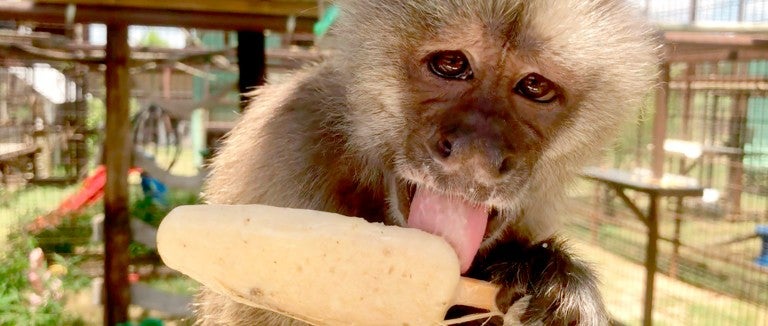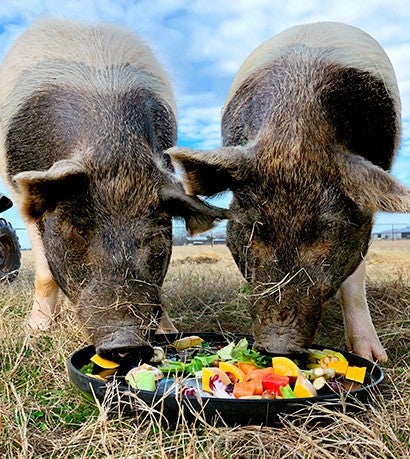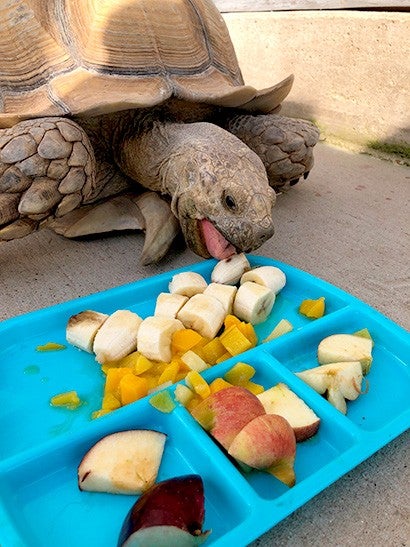AN APPLE A DAY
Carrots, peppers, cantaloupes, snap peas, spinach, cabbage, watermelon, cauliflower, berries, apples, oranges … the primates eat well. Caregivers prep produce assembly-line-style, adding items to buckets labeled for each animal. Diet prep sheets specify how much of each item to add by weight, tailored to the animals’ and species’ needs: Marmoset Abu needs a diabetic-friendly diet, and lemurs shouldn’t have avocados, for example.
Other species enjoy produce alongside their commercial feed, hay or grain: tomatoes for pigs, carrots for horses, strawberries for tortoises, and so on. Office manager Yeni Velazquez estimates the sanctuary goes through 25,000 to 30,000 pounds of produce a year, costing roughly $1,200 a week. The sanctuary also receives donations from grocery stores and farmers. In the fall, donated pumpkins serve as snacks and playthings for many residents, including 25-year-old black bear Sammi, who was once used in the entertainment industry.
GETTING THEIR PROTEIN
Raw, unsalted nuts in their shells make protein-rich snacks for many animals. Caregivers scatter peanuts in wooded areas for the bears to find, while gibbons enjoy cracking into walnuts. Phoenix the tufted capuchin prefers mixed nuts, cashews and a special blend of seeds.
Plants aren’t the only protein sources. Beef makes up the bulk of the tigers’ diet, while some primates enjoy insects. Caregivers place plump, bright blue hornworms around the gibbons’ enclosure, requiring the animals to hang from branches to retrieve them. This setup mimics how gibbons browse in the wild.




